With Assassin’s Creed Shadows graphics, Ubisoft doubles down on its reputation for crafting stunning graphics and immersive worlds. The latest entry in the long-running series showcases how far we’ve come in video game design, particularly in the realms of lighting, environmental detail, and overall aesthetic. As fans, we’ve come to expect a lot from this beloved franchise, and Shadows delivers in ways that are both breathtaking and revolutionary. For those of us passionate about gaming, the graphics and environment in Assassin’s Creed Shadows aren’t just eye candy—they’re a key part of the storytelling. We find ourselves lost in these lush worlds that feel vibrantly alive, each character and detail carefully designed to enhance our experience. This article will explore how Assassin’s Creed Shadows pushes boundaries with groundbreaking environmental detail and artistic creativity, making it not only a visual feast but also a captivating gameplay experience.
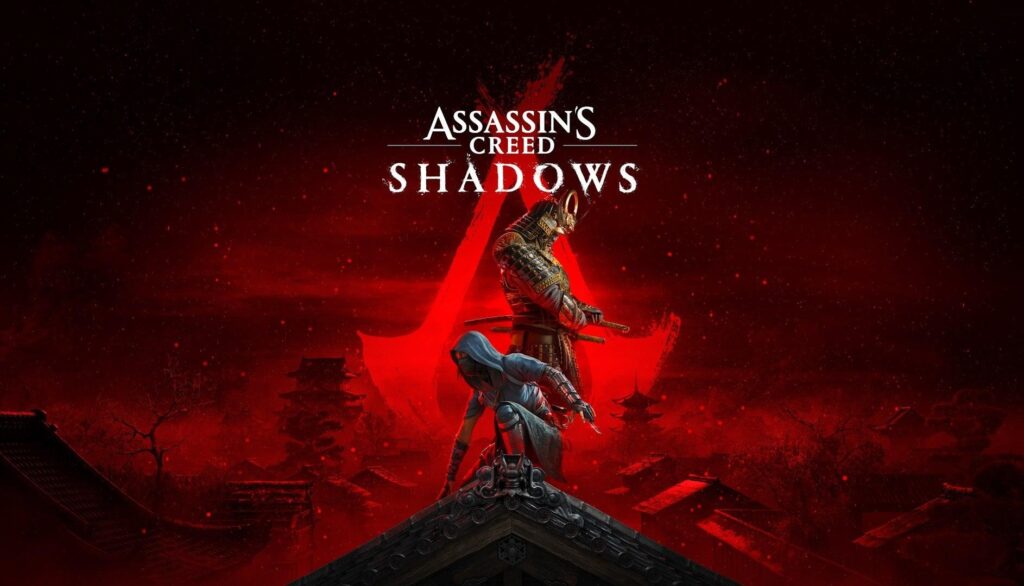
- The world is open, vast, and beautiful, full of villages, forests, castles, and secret paths.
Assassin’s Creed Shadows Graphics
Get ready to be wowed by Assassin’s Creed Shadows’ incredible visuals and the feeling of truly being in 16th-century Japan. The game uses cool lighting and realistic details, boosted by tech like ray tracing, to make everything look and feel more real as you play. We’re diving into how these amazing graphics make the whole experience super immersive and captivating.
1. Lighting and Shadows: Bringing the Game’s Name to Life
Dynamic lighting and shadow effects are where Assassin’s Creed Shadows graphics truly shines, immersing players deeper into the gameplay. As we traverse the richly detailed environments, we can’t help but appreciate how light interacts with our surroundings. Sunlight dapples through rustling leaves in the vibrant jungles, while eerie shadows loom around ancient ruins, allowing for strategic stealth maneuvers.
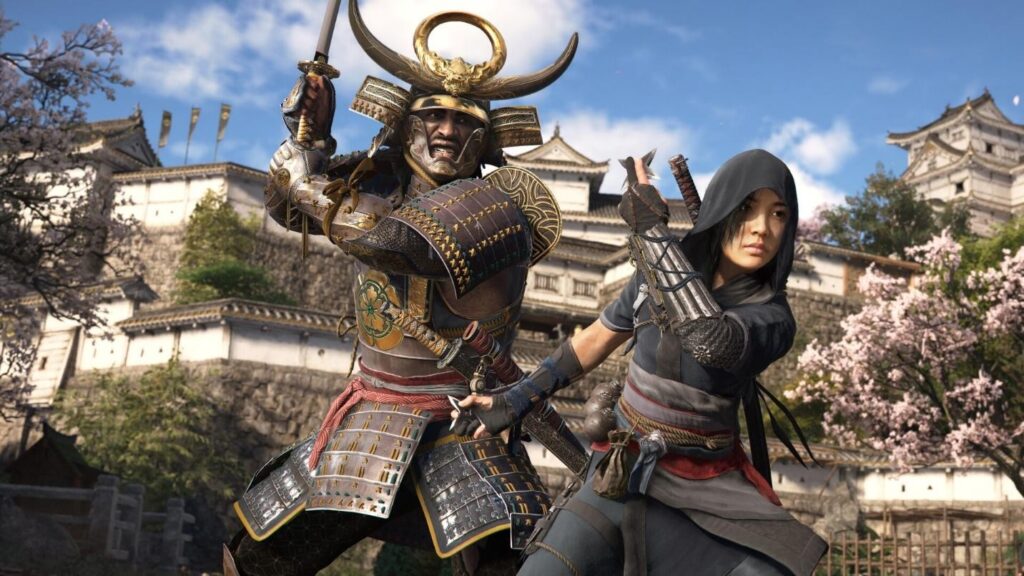
- Seasons change dynamically, affecting both visuals and how you approach missions.
The time-of-day cycles add a layer of realism; one moment we’re navigating bustling marketplaces lit by a golden sunset, and the next, we’re flitting through dark alleys under the cover of night. This adaptability is not just visually pleasing; it plays a significant role in gameplay mechanics, allowing us to hide in shadows and execute stealth kills with cunning precision.
Ray tracing technology enhances this effect even further, making each game session feel like we’re stepping into a living painting. By highlighting intricate details—such as the flickering light from a torch or the way shadows shift naturally with character movement—Shadows transforms lighting into more than just a visual element; it’s an essential part of the gameplay itself. The game uses ray-traced global illumination (RTGI) to create this enhanced lighting fidelity.
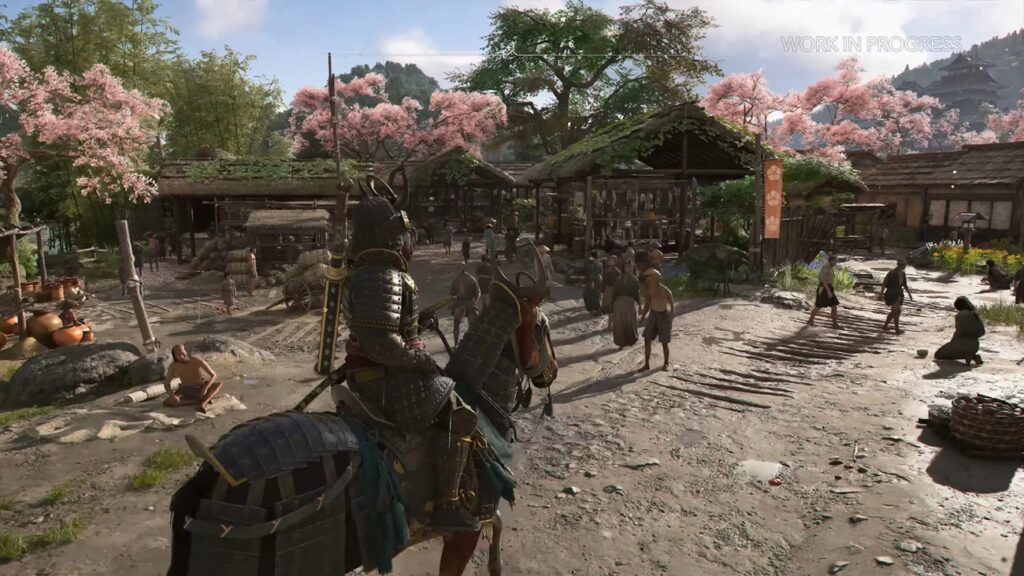
- Yasuke relies on strength, samurai armor, and heavy weapons to dominate in battle.
2. Environmental Realism: Beyond the Surface
The game introduces extensive environmental features in Assassin’s Creed Shadows graphics, which advances gameplay realism. Realism rules supreme in the game’s environments as they show magnificent levels of detailed texture throughout forests and cities. When we investigate how these settings function, we automatically get lost in their aesthetically pleasing design.
When you play the game, you should observe the way weather conditions transform the virtual world. The game transitions between perfect beach weather and intense stormy conditions with a magical effect because weather changes affect our sight, and movement slows us down due to the mud. The rainstorms create dangerous terrain that causes us to change our combat tactics, in addition to making us slip and fall. The dynamic weather system plays a significant role in altering visibility and movement, adding a layer of realism to both exploration and combat.
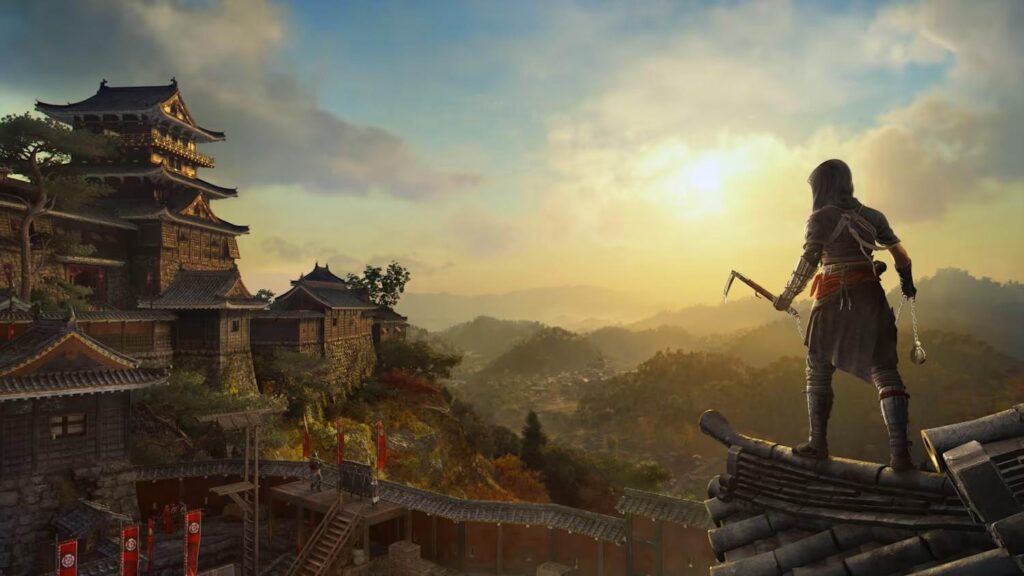
- Time of day matters: Guards are less alert at night, but visibility is harder for you, too.
The graphics advancements in Assassin’s Creed become obvious when analyzing the development between Origins and Valhalla and their current state in Shadows. Shadows represents an advancement rather than an enhancement in the gaming industry. Ubisoft showcases its mastery of environmental immersion in its skill for delivering interactive worlds that supply fresh delight at each gaming location.
3. World-Building: Immersion Like Never Before
Beyond technical sophistication, what truly sets Assassin’s Creed Shadows graphics apart is its masterful world-building, blending realism with sheer creative brilliance. The game achieves a remarkable balance, fusing historical authenticity with imaginative storytelling, which allows us to roam through cities that feel both familiar and fantastically new.
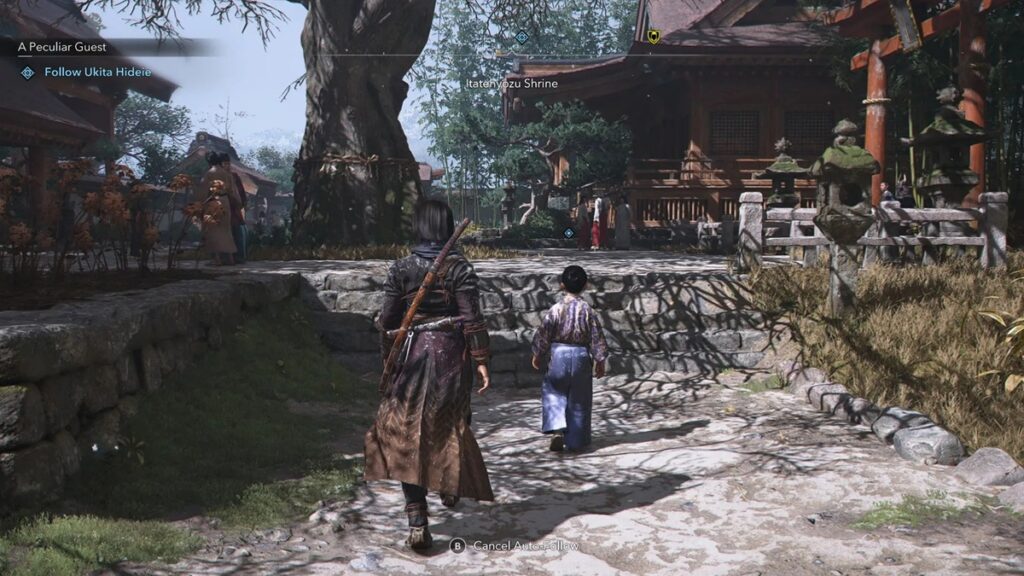
- The story includes historical figures like Oda Nobunaga and real historical conflicts.
As we wander through detailed marketplaces filled with vibrant colors and bustling life, we’re struck by the attention to every cultural nuance embedded within the environment. Each location, from ancient temples steeped in lore to the crowded streets buzzing with activity, offers a unique glimpse into the world and its history. We feel the pulse of life in each area, making it clear that every detail was crafted with care.
These unique environments are not just backdrops; they drive exploration and encourage player curiosity. We can’t help but climb to the rooftops of towering buildings or explore the hidden corners of a forgotten temple. The vertical spaces and interactive elements offer rewards for our curiosity and bravery, leading us to discover secrets that deepen our understanding of the game’s narrative.
4. Graphics Innovations: A Technical Perspective
Diving deeper into the graphics innovations embedded within Assassin’s Creed Shadows, we’re reminded of how video games have evolved over the years. The impressive engine capabilities showcased in this entry facilitate stunning visuals, and we can see the benefits of performance tuning for next-gen consoles like the PS5 and Xbox Series X.
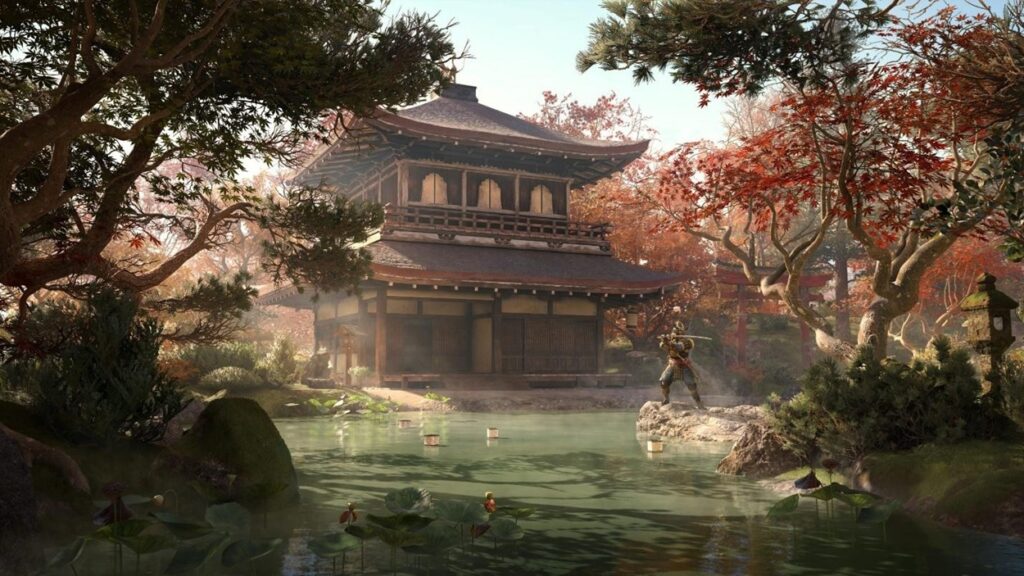
- Assassinations are cinematic and intense, often requiring precise planning.
For example, features such as ray tracing and HDR lighting transform the game into an unforgettable visual experience in Assassin’s Creed Shadows graphics. When we see sunlight glint off a blade or shadows dance across ancient stonework, we realize that we’re witnessing some of the best graphics ever rendered in a video game. These enhancements elevate not just the visuals, but the action that unfolds during our gameplay sessions.
What’s especially exciting is how these innovations make the gaming experience feel more realistic and engaging than ever before. Unlike earlier titles, where graphics might have felt like an afterthought, Shadows integrates these advancements into every aspect of gameplay. We can clearly feel the difference as we embark on missions or engage in combat.
5. Artistic Direction: A Blend of Style and Substance
Assassin’s Creed Shadows features a distinctive artistic direction that distinguishes itself from all other titles in the series. The game’s colorful design choices activate all locations, and their various architectural designs mirror historical aspects that build the game’s plot and world.
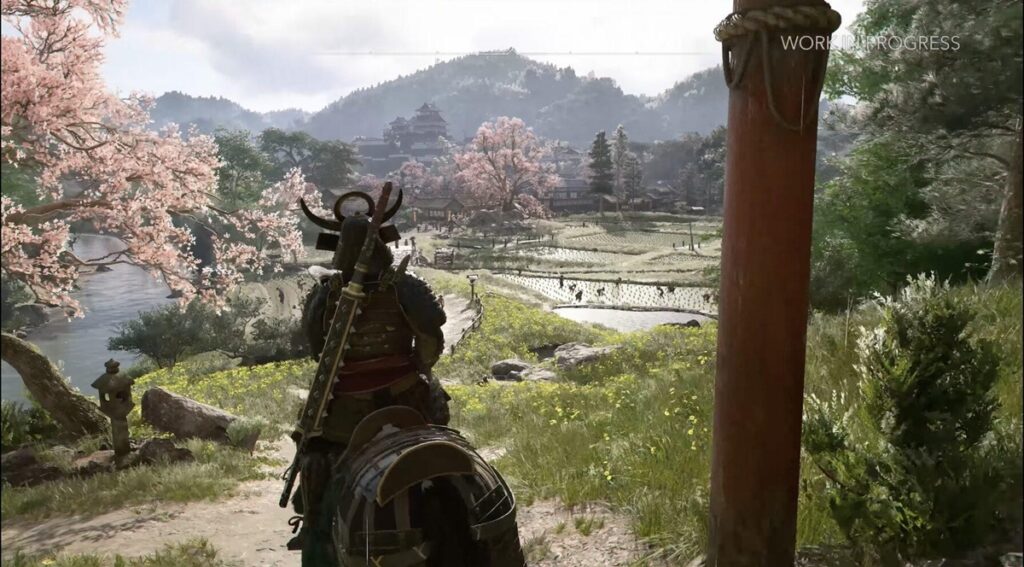
- NPCs react based on your notoriety—too many loud kills might raise suspicions.
The eyes detect visual elements throughout bustling bazaars and serene gardens, which deepen our emotional response to the story. Art styles throughout Shadows integrate small parts of numerous cultural influences that help bring the fictional history to life. Aesthetic choices at Shadows are comparable to the key concepts of Ghost of Tsushima and Elden Ring since they function as the main defining elements that boost the gameplay.
Visual storytelling in Assassin’s Creed Shadows graphics operates as an advanced storytelling technique to hold onto our imagination, which continues to engage us post-controller usage. Every landmark and covert spot shares historical accounts, which allow players to follow the tale from history toward contemporary connections.
6. How Graphics Impact Gameplay: Form Meets Function
The graphical elements of Assassin’s Creed Shadows play an essential role in gameplay mechanics by affecting stealth gameplay and exploration. Every mission of the game is affected drastically by the implementation of realistic shadow effects throughout the gameplay. Strategic decisions relating to barrel hiding or shadow use become instant reactions to our current visual field, which modifies our tactical approach.
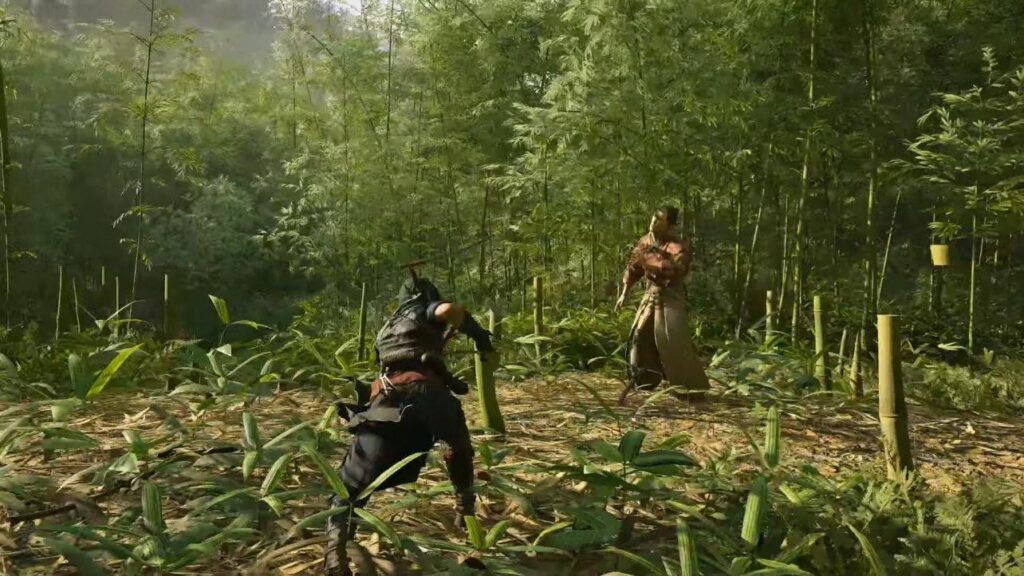
- RPG systems let you upgrade gear, unlock skills, and shape your fighting style.
The game allows us to use its lighting system for stealth operations in critical situations, which establishes an intense gameplay experience that goes beyond surface-level entertainment. A dim dungeon becomes navigable with shadows as we move quietly while guard soldiers patrol nearby. The game’s visual presentation enhances both tension levels and realism and creates additional consideration elements in our decision-making path.
Whether we’re dashing through a sunlit square or creeping through darkened catacombs, the game’s graphics continuously influence our strategies, making each encounter feel fresh and engaging. There’s an undeniable charm in balancing form and function, showcasing how critical design elements intersect with gameplay mechanics.
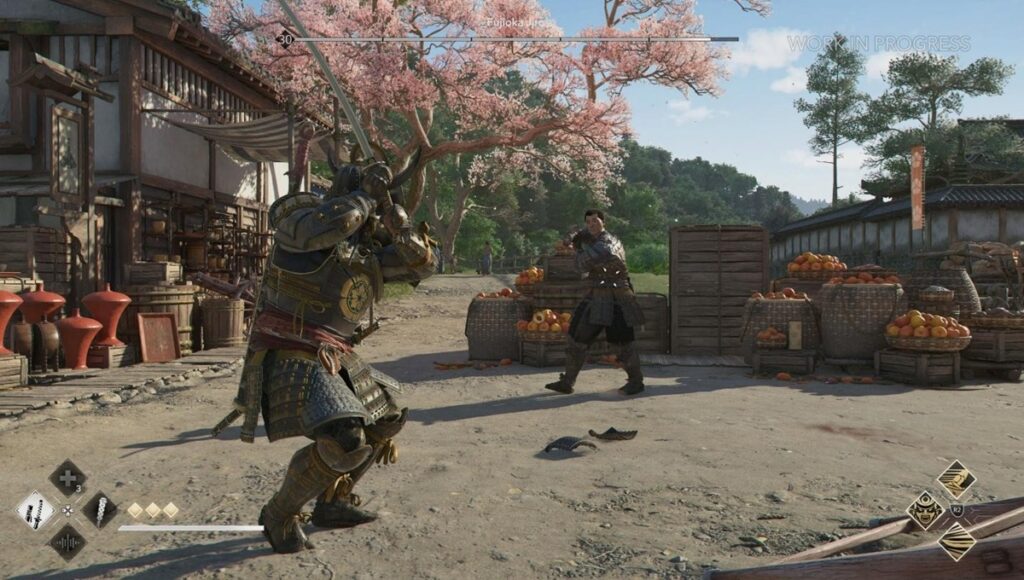
- It blends the best of old-school Assassin’s Creed stealth with modern RPG depth.
7. Final Words: A Visual Masterpiece
Ultimately, Assassin’s Creed Shadows stands as a testament to the commitment Ubisoft has made to pushing the limits of graphics technology and environmental immersion. The delicate interplay of lighting and shadows, the vast realism of the environments, and the innovative artistic direction coalesce to create an unforgettable visual masterpiece. We can’t help but celebrate how Assassin’s Creed Shadows graphics enhances storytelling through its visuals, captivating both seasoned fans and new players alike. As we look forward to diving into this rich world, let’s share our impressions and discuss what environments have excited us most. After all, it’s these immersive moments that make Assassin’s Creed truly special.
Go through comparisons and analysis of the Game Design of most recent and popular games via Gamerative.
FAQs About Assassin’s Creed Shadows Graphics and Environment
1. Does Assassin’s Creed Shadows support ray tracing technology?
Yes, Assassin’s Creed Shadows utilizes ray tracing technology to enhance lighting and shadow effects, providing a more realistic visual experience on compatible platforms.
2. How does the weather affect gameplay in Assassin’s Creed Shadows?
Weather effects, such as rain and fog, dynamically affect visibility and mobility, making players adjust their strategies during missions and exploration.
3. What’s new about the environments compared to previous Assassin’s Creed games?
Assassin’s Creed Shadows features significantly enhanced environmental detail and interactivity, allowing for more immersive exploration than previous titles like Origins or Valhalla.
4. Are there any unique landmarks in the game that reflect its historical setting?
Absolutely! The game includes historically inspired landmarks that blend reality with fictional elements, enriching the immersive experience as players explore various locations.




